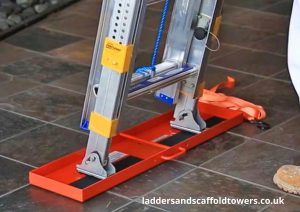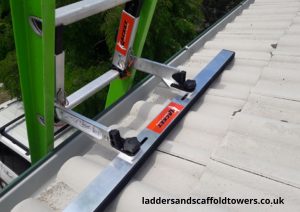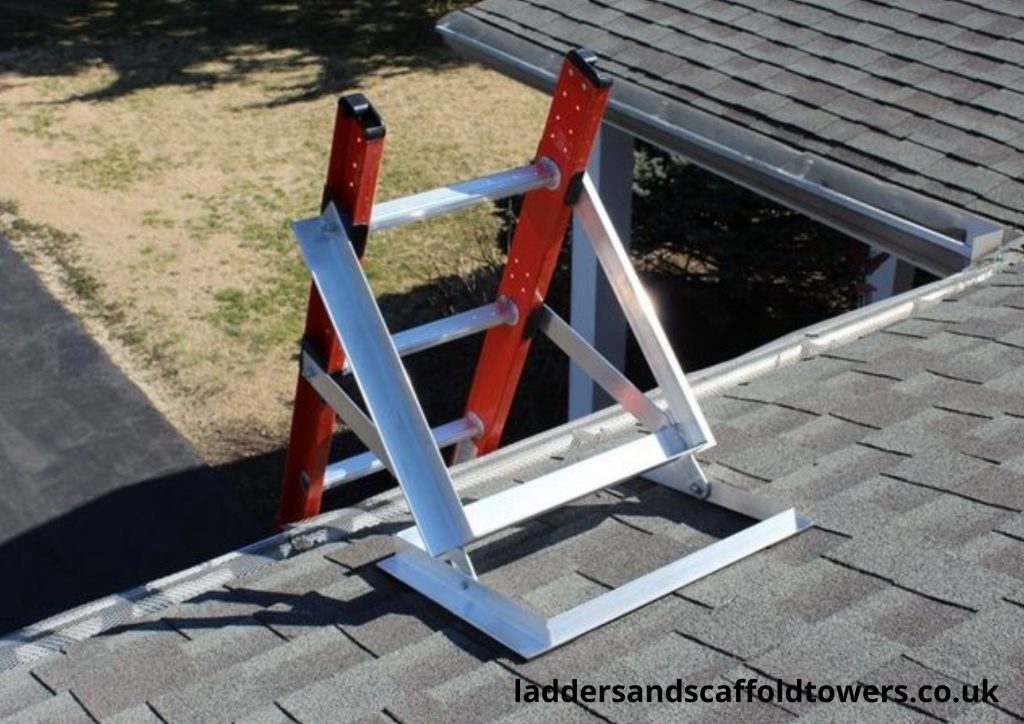You might wonder why an article on how to make a ladder stable is necessary. Surely everyone knows how to use a ladder. Perhaps they do; however, the accident statistics imply something else or, at the very least, a need for a reminder.
At BPS Access Solutions, we want to assist all ladder users to increase their knowledge on working at height with ladders so we can ensure fewer contractors and DIYers are injured or, indeed, killed. The information in this article is not revolutionary; it is a reminder of how basic the precaution needs are for the reduction in error and the increase in safety.
Another day of safety is another day of happiness at heights.
Let’s look at ladder stability and related work safety.
Why making a ladder stable is important
Nearly 25% of all work-related deaths involve falling from height, and an additional 8% survive the falls but suffer severe injuries. That’s a third of the workforce ‒ a huge loss on every front and all avoidable!
Regardless of how ‘simple’ a task may seem, it is vital that the correct equipment is selected, which includes:
- Selecting the correct ladder
- Being experienced in working at height
- Being competent for the task at hand
- Having knowledge on how to make a ladder stable
The advice we give here will assist with keeping your operations compliant and covered by insurance, but you are, in fact, welcome to follow your own process. The legislation only calls for workers and employers (and DIYers) to conscientiously take a sensible approach to manage safety.
What are the guidelines around ladder usage?
In addition to the ‘sensible approach’ we mentioned above, the legislation also states that you should only nominate to use a ladder, for working at height, when you have properly assessed whether the risk for doing the specific task on a ladder is a good safety choice versus using another elevation system that offers greater fall protection because a) the risk is sufficiently low, b) the work duration time is short, or c) the site cannot accommodate another system.
It is important to work through the above points in sequential order. For example, you can’t jump to point B and decide to use a ladder because it is only a thirty-minute job. The risk assessment must first be addressed.
Let’s look at an example: If a hotel’s reception area needs a very high crystal wall sconce replaced, but due to the complexity of the light fitting, e.g. fitting on the crystals, the overall task is going to take thirty minutes of work time, and you will need different equipment and space to place the sconce at different stages. Therefore, thirty minutes on a leaning ladder or stepladder is not recommended firstly due to the complexity and secondly the time span. Instead, it is recommended that you select a small mobile scaffolding tower or a small, automated low-level access lift.
Only select a ladder where you are certain that you can use them with complete safety to the user and people in the vicinity of the ladder. In addition, the ladder should be placed on a level base and be stable. The latter does not include bricks stacked up to bring up the ground level on one side (a favourite shortcut on sites). In addition, there should be securing points for the ladder, i.e. points to which you can tie the ladder. This does not include gutters or downpipes but points with a live load strength.

Can anyone use a ladder on a site?
Not everyone can be sent scurrying up a ladder, even if it is just a quick “5-minute” job. Anyone mounting a ladder must be deemed competent in its use and have experience with it. They should also be allowed assistance if they so request. If you are training in a work environment, this activity must be supervised.
You can achieve competence via attending training, hands-on experience, theoretical studies or a combination of these.
Training should relate to the type of ladder used, the height elevation, and the execution of the task on the ladder. The person must gain the knowledge of:
- How to independently assess the safety requirements and risks that occur when working on a ladder for the specific task they have been requested to do.
- Knowing when a ladder is a correct choice for the specific task and when it is incorrect.
- Knowing if the correct ladder has been selected for the requirements of the specific task.
- How to correctly erect, stabilise and pack away the selected ladder.
What should happen before you make a ladder stable?
Check, check and check again. Spend a few minutes assessing the ladder and your approach to safety before mounting it. If you have never used the particular ladder available to you, request access to the manufacturer’s operations manual.
Prior to using the ladder, do a visual assessment to see if you can spot any corrosion, wear and tear, damage, warping or other signs of material stress.
Ladder checks should be similar to checks done on other equipment. The user should check them but not only the user. If someone else packs the ladder away, then they can also check it for further safety. The ladder should have scheduled maintenance checks. Recommended checks are:
- Done by the person about to use the ladder before mounting it.
- At the start of each workday.
- When an unusual event takes place, i.e. if the equipment has fallen, been dropped, had something drop on it or has been on a very dirty site or has something spilt on it.
- In the case of the latter two dirty factors, the ladder should be cleaned.
In any of these scenarios, the following components can be assessed:
- Stiles or sides of the ladder – Check for warping, bends or dents.
- Feet – The rubber assists in the stabilisation of the ladder. Check if they have worn through underneath or have splits or tears.
- When moving the ladder to a different point on site, make sure no aggregate is under the feet, thereby hindering the grip.
- Rungs – In a similar scenario to the stiles, check if rungs are warped, bent or dented. Such damage to stiles and rungs could cause a collapse of the equipment.
- Locking mechanism – Is the lock working smoothly and remaining firmly in place? Is any part of it warped, bent or dented?
- Platform – If relevant to the specific ladder selected, check the platform for damage. It contributes to the ladder’s stability.
- Steps or treads – If these parts of a stepladder are dirty, such as with aggregate or silicone, slips can easily happen. Check that each step or rung is securely attached to the stiles. Their strong integration prevents the collapse of the ladder.
If any problems are identified, then do not use the ladder. Report it to the health and safety officer or, in the absence of that role, to your employer. If you are a DIYer, then scrap the ladder and purchase a new one.
Safe use of your ladder
As mentioned, you will commence with your pre-use assessment listed above, and next, you will commence with safe working operations. Here are our helpful guidelines:
Leaning ladders
The guidelines to using a leaning ladder safely are as follows:
- Plan your materials, tools and supplementary equipment. Choose the lightest options and carry as little as possible. If the volume or quantity of these items is too much for the safe use of a ladder, then an alternative system must be used for working at height.
- The manufacturer’s user manual and on-equipment labels should guide you as well.
- Calculate your weight combined with the total kilograms of equipment, tools and materials.
- Contact – Maintain three points of contact when climbing and working.
- If you cannot keep one of your hands on the ladder, e.g. hammering in a nail, you must plan an alternative connection point from the start.
- An alternative could be to attach the ladder with rope to an anchor in the structure.
- Do not rest the ladder on a weak contact point like a smooth tiled surface or gutter. If this is inevitable, then the ladder must be anchored. A gutter shouldn’t be used as the gutter will be damaged.
- Ensure the rubber feet are in excellent condition.
- Limit stretching beyond the stiles – As a guide to managing this, keep your trouser or shorts button within the side stiles of the ladder.
- Length – The top rung of a ladder is not for use. In fact, the top three rungs or tests should not be used. To select the right length of ladder, measure the length up to the fourth-to-last step or rung.
- Plan to have a minimum of thirty centimetres/one foot and a maximum of ninety centimetres/three feet additional length past the landing or level at which you are working. Over three feet will create a risky lever and could cause the ladder to swing out.
- Angle – Keep the angle of the lean at seventy-five degrees.
- Grip – ALWAYS face towards the ladder when going up or down.
- Maintain your grip at all times. When ascending or descending the ladder, do not carry things in your hands; use a tool belt.
- Movement – Make no attempt to lengthen or reposition the ladder when still mounted on it, even if colleagues are attempting this while you are still mounted.
- Stability – Do not position the ladder on “random items” such as a stack of bricks, rocks, forklifts, vehicles or any other equipment.
- Material – When executing electrical work, select a ladder manufactured from non-conductive materials such as wood or fibreglass.
Telescopic ladders
Telescopic ladders are a more versatile version of leaning ladders, but they flex more due to their length. The guidelines to using a leaning ladder safely are as follows:
- Follow the leaning ladder guidelines.
- Test the ladder’s mechanisms: extension and locking.
- Due to the extra movements of the telescopic ladder, there is a risk of trapping hands, clothing and tools in them so operate with care.
Stepladders
The guidelines to using a stepladder safely are as follows:
- Follow the relevant leaning and extension ladder guidelines.
- Make sure ALL four feet are in contact with the ground level; three feet is unacceptable.
- Place the ladder to face the spot where the work will be executed.
- Having said this, there are rare occasions when side on is the only option, e.g. narrow aisles in a storage room.
- Tether the ladder to a supporting structure.
Combination and multi-purpose ladders
These ladders can be a stepladder or frame ladder plus a variety of other configurations.
Follow the leaning and extension ladder guidelines, plus:
- Do not extend the top section of a three-part multi-purpose ladder beyond the limit marked on the ladder (It will also be specified in the operations manual).
- Do not utilise the top 4 rungs.
- Read the operations manual before commencing.
What are the stabilising options for ladders?
- Tether both stiles of the ladder to a strong, load-bearing point on the structure.
- If you cannot add a load-bearing tethering point, add a wedge that can affix the stiles against a wall or behind the feet on the ground. Screw these into the structure or ground substrate.
How is this addressed for next-level access ladders?
- Follow the relevant points from the leaning and extension ladder guidelines.
- These ladders should be tethered to a secure contact point.
- They must have an additional length of a minimum of ninety centimetres (three feet) above the next level they are accessing.
- The handrail must be stable and strong.
- At the entry points to the ladders, it is recommended that swing-lock gates be added to enhance safety and security.
- Under no circumstances should a regular stepladder be employed for accessing the next levels. Only step ladders that have been customised specifically for this function, and meet all of the above points, can be used for this purpose.

Maintenance and condition as part of safety measures
In the commercial environment, employers, directors and business owners are obliged to ensure that all ladder types are in an appropriate condition for the business and work scope handed to staff. As a DIYer, the buck stops with you, so please maintain your equipment and protect your safety.
Your ladders of various types should:
- Undergo a pre-use check every day it is used and before each new person uses it.
- Pass your visual and pre-use assessment.
- Should have, in the commercial environment, regular assessments within these guidelines:
- Set up on a managed schedule.
- Be carefully recorded.
- Be actioned by a certified or qualified person.
- Damage and/or maintenance requirements must be recorded.
- The repair or service must be quickly actioned and be carefully recorded.
- Have all maintenance and repairs done in compliance with the manufacturer’s guidelines.
- Be inspected even if they are part of scaffolding structures with a recurring seven-day inspection guideline. The integrated ladders must be part of this inspection cycle.
- Be deemed by the competent person as suitable for the intended use, i.e. are robust enough for the job;
- Stored in an environment and in a manner that is compliant with the manufacturer’s guidelines.
Our experts are at your disposal for discussing ladder stability. Browse our ladder selection or contact us for more information.
No related posts.



